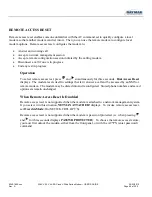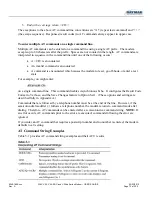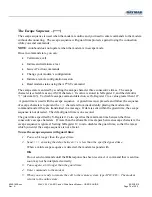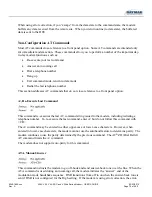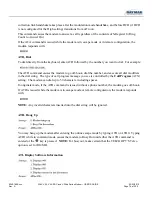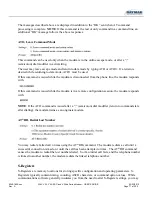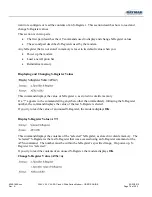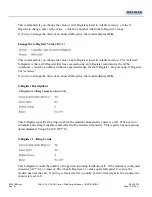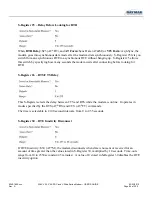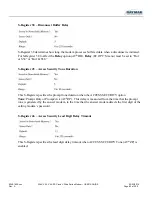
0049-1800-xxx 326X V.34, V.34-SDC and V.32bis Series Modem – USER’S GUIDE 02/23/2010
Rev. A
Page 75
of
205
When using error correction, if you “escape” from the data state to the command state, the modem
buffers any data received from the remote site. When you return online (to data state), the buffered
data is sent to the DTE.
Non-Configuration AT Commands
Most AT commands cross-reference to a front panel option. Some AT commands are intended only
for immediate modem action. These commands allow you to perform a number of the important day-
to-day modem functions, such as:
•
Re-execute your last command
•
Answer an incoming call
•
Dial a telephone number
•
Hang up
•
Exit command mode, return to data mode
•
Redial the last telephone number
This section addresses AT commands that
do not
cross-reference to a front panel option.
A/, Re-Execute Last Command
This command re-executes the last AT command string issued to the modem, including redialing a
telephone number. To re-execute the last command, enter A/ but do not follow this command with
<CR>.
The A/ command may be entered in either upper-case or lower-case characters. However, when
entered in lower-case characters, the modem cannot use the autobaud feature to determine parity. The
modem continues to use the parity determined by the previous command. The AT
*
ZD (Dial Rstrct)
AT command limits the A/ command.
The modem does not support auto-parity for this command.
ATA, Manual Answer
This command instructs the modem to go off-hook and send answer-back tone over the line. When the
ATA command is used during an incoming call, the modem initiates the “answer” end of the
modulation mode handshake sequence. DSR transitions from off to on when the answer-back tone is
sent if DSR is not configured for the High setting. If the modem is using error correction, the error-









